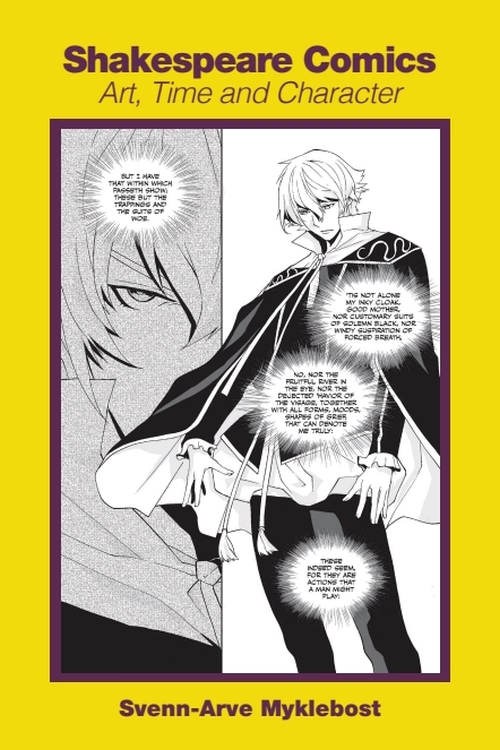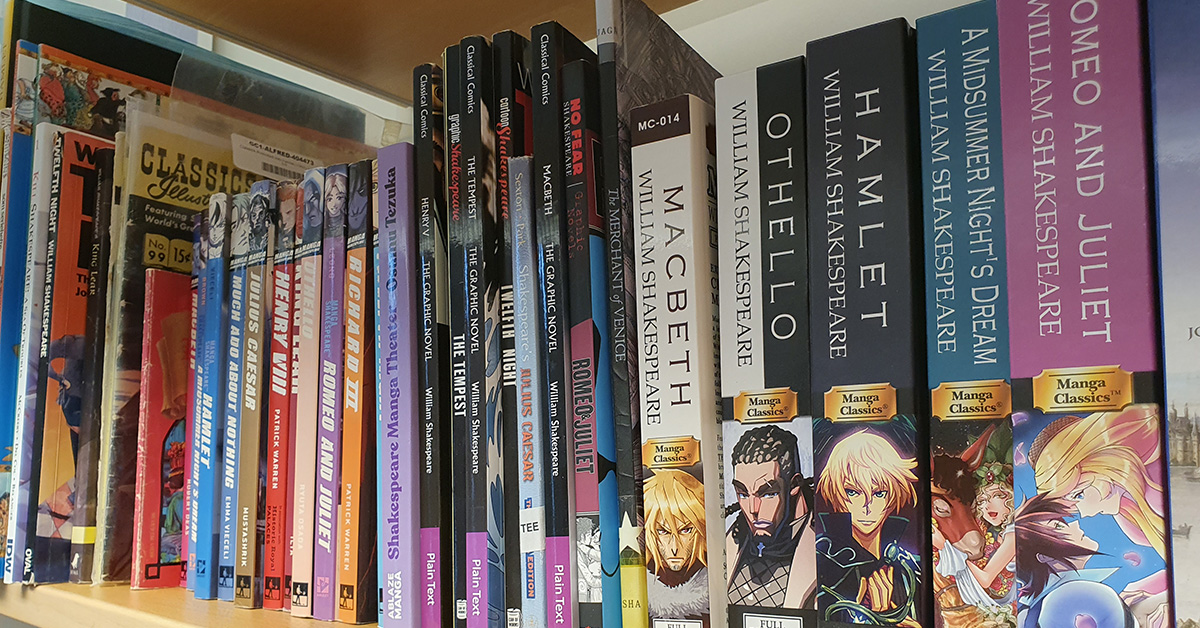
by Svenn-Arve Myklebost

Shakespeare Comics: Art, Time and Character identifies how comics, manga and graphic novels reshape Shakespeare’s works in manners unavailable to other media
Tell us a bit about your book
Shakespeare Comics: Art, Time and Character is a study of comic-book, manga and graphic novel adaptations of plays by William Shakespeare. It uses comics as a lens to study a range of issues, from how visual art influenced the genesis of the plays – to how graphic adaptations have shaped the canon since the 1950s. As with all reconfigurations of Shakespeare, these comics say a lot about the societies they emerge from, but they also represent their own cultural niche and express ideas that we don’t see in films or on the stage.
Comics have a varied palette of visual, dramatic and literary devices, and great potential for intertextual reference. A big part of my study addresses how comics use other forms and texts to adapt Shakespeare, including allusions to paintings, novels and other comics. Regarding history, the book considers Shakespeare comics both as historic artefacts and as works that take up the passing of time as a theme. The study is also concerned with genre and the performative dimensions of Shakespeare comics, and focuses on the graphic representation of frequently othered Shakespearean characters such as Shylock and Othello.
What inspired you to research this area?
The project came together organically as a combination of things I was already interested in: comics and Shakespeare. The former has been a life-long companion, the latter an interest of mine since I picked up a cheap collected edition of the plays as a student. My erstwhile supervisor Stuart Sillars’s work on Shakespeare and painting demonstrated to me that it is possible to write about visual Shakespeare adaptations and that in doing so one quickly begins to uncover connections to a great variety of political, aesthetic, cultural and historical topics.
What was the most exciting thing about this project for you?
What was most exciting is also what is most frustrating: Shakespeare and comics is a huge field that has been subject to relatively little research (compared to, say, Shakespeare and film). It has great potential, but it is not always easy to know where to begin.
The book seeks to address the basics of graphic Shakespeare adaptation, but there are lots of titles I did not have the space to look at and many topics I was not able to address. The field is so rich that there is very little overlap between a recent edited collection and my own book, and there is a massive scope for further studies still.
Did you discover anything particularly strange or surprising?
One that stuck out was the similarity between early modern visual-verbal print forms such as the emblem book and modern-day comics. Simply explained, an emblem combines a motto with a picture and a poem to address a moral issue, a philosophical point or a religious matter. The iconography is typically esoteric, but it can also be ‘dramatic’ – depicting figures such as magi, soldiers or mythological monsters posing and interacting. The poems are superficially Shakespearean, and tend to be heavy on the proverbs.
It turns out that Shakespeare comics mimic this visual-verbal pattern surprisingly often, possibly because emblematic forms are ‘encoded’ into the play-text and then ‘decoded’ by comics. But comics are also ‘emblematic’ to begin with, as the notion of reading words and pictures together is their whole raison d’être. The similarities are to some extent accidental, but something Shakespearean nevertheless emerges.
Do Shakespeare comics represent specific views of the world?
There is a certain outsider quality to comics that associates them with progressive, countercultural outlooks, but the relationship between comics and Shakespeare is as complex as anything else related to the canon. For every Shakespeare comic that interrogates a cultural assumption about gender, race or sexuality in the reception of plays like Twelfth Night or Othello, there is another that reinscribes reactionary world-views and establishment values. There are subversive aspects to comics, but they are by no means always brought to the fore!
What’s next for you?
I am currently looking into a few topics I did not have room for, such as Shakespeare comics in education and Shakespeare comics as children’s literature. I am also involved in editing a collection that studies Shakespeare’s treatment of the classical world (Ancient Rome and Greece) and how this is understood and remediated in modern Shakespeare adaptations. My own contribution to the collection will of course look at how this is done in comics!

About the author

Svenn-Arve Myklebost is a lecturer in English literature and culture at the University of Inland Norway. He is interested in Shakespeare and comics, adaptation and translation. He coordinates the international Shakespeare network known as the BHSN, whose blog can be found here.





